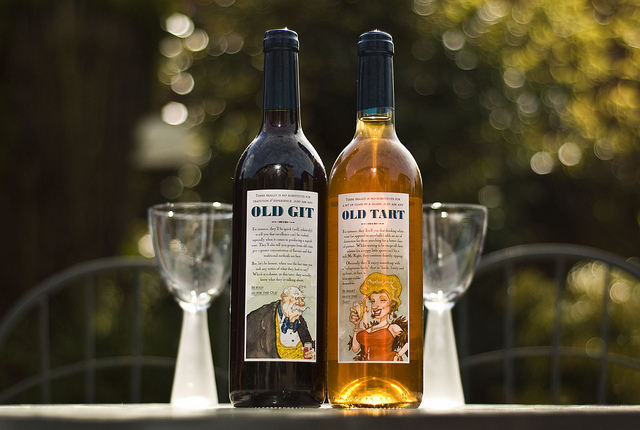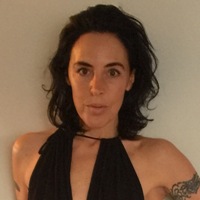
Recently, I took a “Left Brain, Right Brain” test online, fueled by a curiosity as to whether some computerized tally of my answers would label me analytical or instead as an artist.
My result was 50-50, right down the middle.
So I took another.
That second test too, yielded 50-50, precisely and on the dot.
Mildly amused by the odds of that split result on two separate quizzes, and with me admittedly a little skeptical as to their accuracy, I successfully searched for a third version, complied with their instructions, and then received nearly the same result. 52 (left) and 48 (right).
So logic, analytics and language, plus facts and computation represent the “left.” (Think, engineer.)
Over to the right however, (unlike politics in some ways oddly enough), is creativity, holistic thinking, imagination, daydreaming—and so it goes. (The image of an artist is surely conjured up.)
That a fun little game or quick test on the internet could spiral me into a deep, introspective look at myself may sound silly. But I was keenly fascinated by all of this brain branding stuff. I began to see numerous traits and innate aspects of my being which supported the evidence quite perfectly—I am split right down the middle.
So why can’t we humans just be accepted as a magnificent “blend” or multidimensional being in today’s wild timetable and pace? Why must we be one thing or another and only that, in order to be whole?
Can’t someone be socially liberal, fiscally conservative, sport a fishing license and yet be a zealous advocate for dogs? Must we judge whether someone is “this or that enough?” Doesn’t them being here warrant enough for them to be loved and respected?
What does it say about us when we hold people up to that self-imposed, designed and lived out story, dictating that one must entirely, across every board, think like we do?
Nonchalantly, we cast people out if, at first glance, they appear to be the antithesis of how we might score on a little funky “brain test” activity. Yet the fact that their innate traits or behavior sparked some kind of energy within ourselves reveals that we too, (and in some way that we may not even be in touch with yet), greatly resonate with it!
How come so much political hate today permeates the airwaves of social media? Why is one extreme revered and taken as gospel—in any genre—and deemed the “norm?” (All while, folks who may not vote or think exactly as we do—yet still agree with some core principles such as eco-friendly and globally conscious living—fall to the gutter in our mind’s eye because they are not “enough” in one or more categories?)
Why must we be an extreme? In any direction? When did balance (not only physical but emotional, spiritual, religious and in every other way) become so passé?
And why is such tragic psychological behavior—cruelty to ourselves, and then thrust at others too via our segregative judgment—okay, and at times even coveted, worshiped and embraced without a second thought?
What is this fixation we have with celebrity break ups, or with them having ventured outside the confines of responsible “role model” status, albeit written and dictated by our own judgmental pen and personal frame of reference?
Why is it acceptable to push people into one cookie-cutter fit of what, in our mind, “makes sense” to sum them up, and to then badger them with hostility for their uniqueness and simply because it doesn’t match ours?
It matters not.
Judging others, whether local pals or famous clutches, helps us to accept our own lots. Perhaps even, via a more private and mundane comparison, we look to the famous who are failing, and realize that it means we are indeed okay, yet we fail to see that we too, are comprised of such a combo: human, with flaws and all. Romantically inept, athletically challenged, or maybe just some off the wall combo like, “a singer who can also be masterful at chess and oddly economics too”—depicts half the human beings whom we underestimate, judge or merely peg as one dimension.
When did people need to become robots and be just one pigeonholed concept that we determine for them? (And all while not knowing most people we judge, or not on any intricate level anyway, since we attach a distance to them right away, and usually an unkind one, within seconds of meeting.)
Yet in one week, I encountered a mechanic who works on decrepit cars by day, and by night, he quite passionately dances in the ballet! Next up was a former international pilot, who landed enormous “777” planes right out of the abundant and ominous sky, yet he today also loves cooking, playing guitar and growing tomatoes. A gal who serves as Police Commissioner is also a “wine rep,” peddling grape varietals to restaurants and stores. Yet the same woman is too a spinning instructor at a fitness center and a mom to a young, adorable little girl! Another woman, teaching aerobic-oriented activity, too divides her time amid that task and the social work counseling sessions that she conducts, and yet also picks up a nice chunk of side income by doing other people’s taxes on occasion—she sports and balances, beautifully and masterfully, each hat!
So when we label, judge, assume, predict and peg someone to be merely their uniform, title, profession or perhaps the activity we met them through, we’re getting it wrong. And grossly so.
We creatures are multidimensional entities and with eclectic, sorrowful, and still joyous journeys that are marked by wild passion and dedicated focus.
More than just our awards, our debt, our parental obligations or the food style that we eat, are we—layered intricately, beyond how we vote or what we watch on television, or which genre of music we love, as we are such interesting, whole, and quite powerful individuals!
We needn’t be somebody’s typecast of what is “enough” and what that role is “supposed” to look like. Moreover, we truly do some karmic damage when we assume that either ours or another person’s is only one way. Not only does such thinking limit us from tapping our entire perspective, but it also creates a negative energy or distance between others and us. We then just resentfully chalk people up to some caustic bore perhaps. Or conversely, we may decide that someone is too eccentric, out there and off the whacked out wall! We think we’ve got them “all figured out.”
With a nod to “old age, new age” metamorphism coming quite harmoniously together in today’s era, I look also to the fact that in ancient language and body healing practices, the left was where one received, whereas the right served instead as how we share with others and with the world.
Hence ailments and injuries on the left, (if following Louise Hay-isms or the mind-body affirmation techniques which she and others have taught for years) represent our struggles to receive. Whereas, any hurt that has reared on our right is accordingly an indication of where we are blocked in how we share, or care for others outside of ourselves.
With the above in mind, we can surely recover from trauma a little faster, once identifying and facing head-on the emotional issues in each location. But maybe too, we can release our need for us, or others, to “pick a lane,” for their dear brain, and to aptly match.
It is by remaining open-minded after all, that we allow new knowledge on how to relate to those who learn or think quite differently than we, that we in turn free our minds from the clutter that is surely wasted when we have tunnel vision, and in solely one lane.
Author: Laurie-Beth Robbins
Image: Janet Ramsden/Flickr
Editor: Catherine Monkman








Read 0 comments and reply